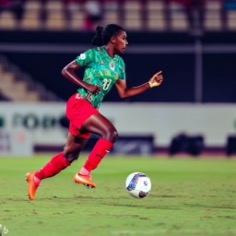Soccer, also known as football in many parts of the world, is a sport loved and followed by millions. When it comes to international competition, few events captivate the world’s attention quite like the FIFA Women’s World Cup. As these talented athletes showcase their skills on the global stage, it becomes essential to prioritize their health and well-being. One area of utmost concern is the management of concussions, a mild traumatic brain injury that can have severe consequences if not properly addressed. In this blog post, we delve into the importance of concussion protocols in the Women’s World Cup and how these measures are evolving to protect the players.
1. Understanding Concussions in Women’s Soccer
A concussion is a type of brain injury caused by a blow to the head or a sudden jolt to the body that results in the brain moving rapidly within the skull Soccer players, both male and female, are at risk due to the nature of the sport, which involves heading the ball, aerial challenges, and physical contact. However, studies have shown that female athletes may have a higher risk of concussion than their male counterparts, making it imperative to address this issue specifically in women’s soccer.
2. The Impact of Concussions on Female Soccer Players
Concussions can have a profound impact on a player’s health, performance, and overall quality of life. Short-term effects include headaches, dizziness, nausea, and memory issues, which can hinder an athlete’s ability to compete at their best. Additionally, repeated concussions or improperly managed head injuries can lead to long-term consequences.
3. FIFA’s Role in Establishing Concussion Protocols
Recognizing the importance of player safety, FIFA has taken significant steps to implement concussion protocols in the Women’s World Cup and other international soccer competitions. These protocols are designed to ensure that players receive appropriate medical attention and sufficient time for recovery before returning to play. This year the Women’s World Cup has introduced independent concussion spotters for the first time in tournament history.
4. Key Components of FIFA’s Concussion Protocols
- The Women’s World Cup has introduced independent concussion spotters for the first time this year, following the introduction of spotters to the men’s tournament last year
- Sideline Evaluation: When a head injury is suspected, a player undergoes a comprehensive evaluation by medical personnel on the sideline. This includes assessing symptoms, neurological function, balance, and memory.
- Substitution Rule: FIFA allows an additional substitution in cases of suspected concussion to ensure players can be promptly removed from the field for a thorough evaluation without affecting the team’s overall substitutions.
- Medical Assessment: A player who has sustained a suspected concussion must be thoroughly evaluated by a qualified healthcare professional following the match to determine the severity of the injury and the appropriate recovery plan.
- Return-to-Play Protocol: Players are subject to a structured and gradual return-to-play process, with defined stages that require medical clearance at each step. This approach minimizes the risk of exacerbating the injury and allows for sufficient healing time.
5. The Evolving Nature of Concussion Protocols
The landscape of concussion management is continuously evolving, and FIFA’s protocols are no exception. As research on concussions and their long-term effects advances, the governing body, along with other sports organizations, adapts and updates the protocols accordingly. This ongoing commitment to player safety is crucial in safeguarding the well-being of athletes and promoting a culture of accountability and care.
Concussion spotters are medical personnel. They watch the game closely on a monitor with an objective of monitoring collisions, including in slow motion. Based on the collision and the player’s movements post-collision, they inform team doctors if they suspect a concussion may have occurred.
Another recent change has been to substitions. In 2021 FIFA trialed a rule that allowed substitutions based for a concussed individual that does not count to the overall limit of 5 substitutions. This year’s Women’s World Cup has maintained this rule.
6. Raising Awareness and Education
Concussion protocols are only effective if all stakeholders, including players, coaches, medical staff, and fans, are aware of their importance and implementation. Raising awareness about the signs and symptoms of concussions and the significance of adhering to the protocols is essential to creating a safer sporting environment for everyone involved.
7. Supporting Concussion Research
Further research into concussions, particularly in women’s soccer, is necessary to deepen our understanding of the injury and its impact. Funding and supporting scientific studies can shed light on ways to improve prevention, diagnosis, and treatment methods.
In conclusion, concussion protocols in the Women’s World Cup and soccer, in general, play a pivotal role in protecting the health and safety of players. The implementation of FIFA’s protocols reflects the sport’s commitment to athlete welfare and reflects the evolution of concussion management practices. By prioritizing player safety, raising awareness, and supporting research, soccer can continue to be a game that showcases talent, skill, and compassion for the well-being of its athletes. As fans, players, and sports enthusiasts, it is our collective responsibility to ensure that concussion protocols remain at the forefront of soccer’s agenda, enabling athletes to shine on the field while being cared for off it.
